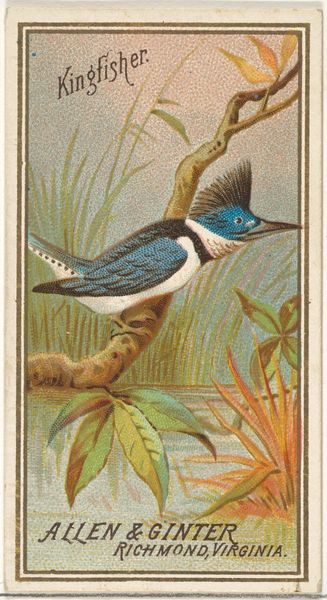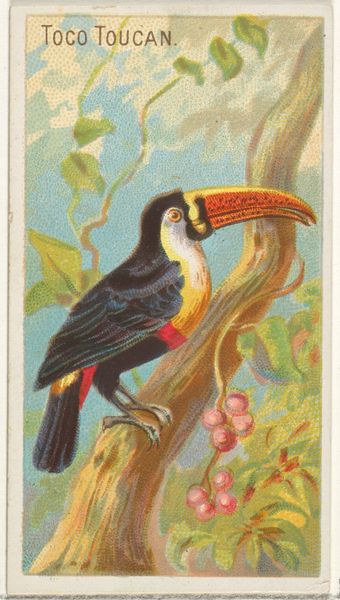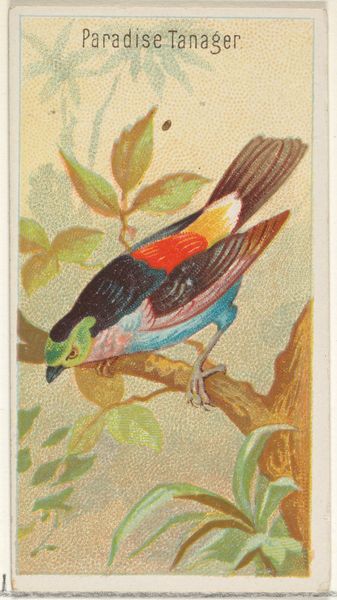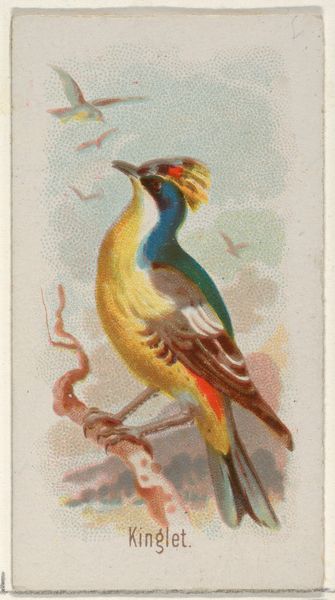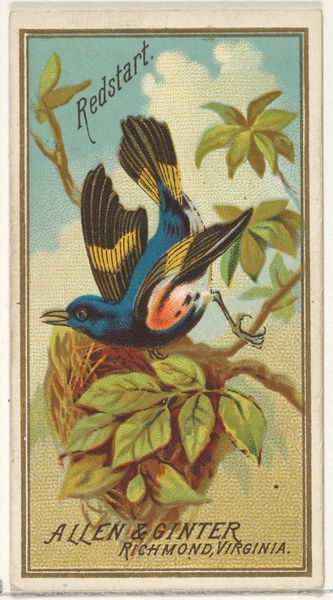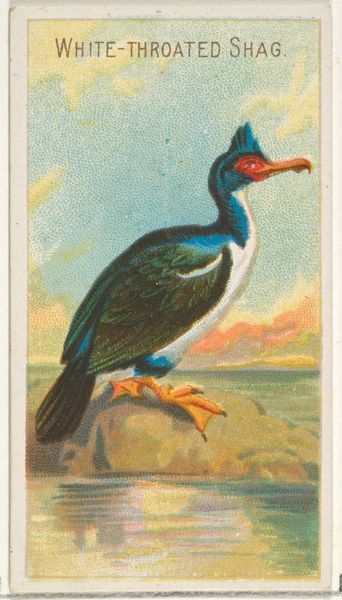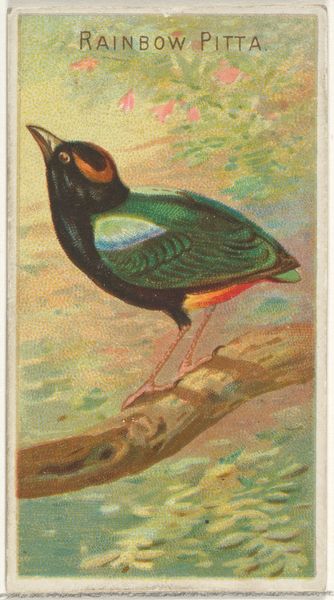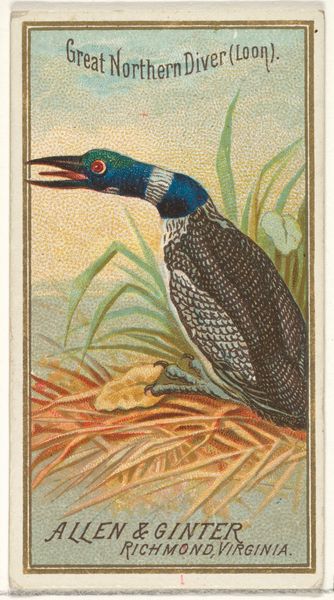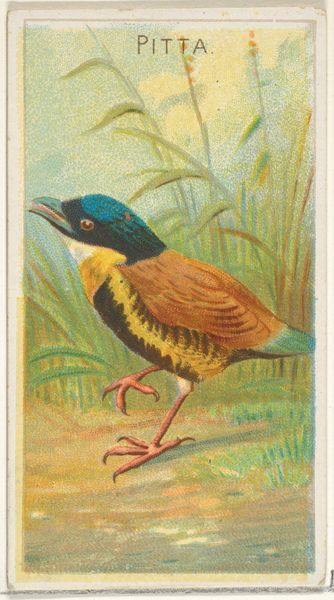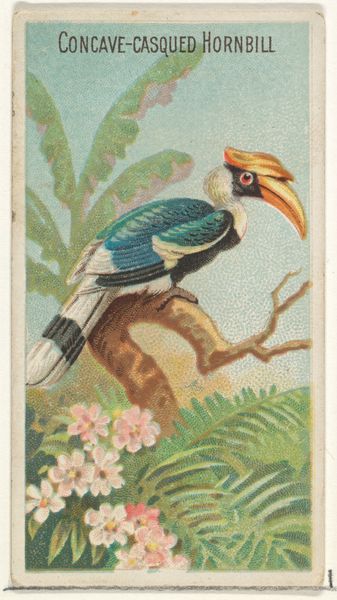
Sacred Kingfisher, from the Birds of the Tropics series (N5) for Allen & Ginter Cigarettes Brands 1889
0:00
0:00
Dimensions: Sheet: 2 3/4 x 1 1/2 in. (7 x 3.8 cm)
Copyright: Public Domain
Curator: The Allen & Ginter company produced this image of a Sacred Kingfisher around 1889, as part of their Birds of the Tropics series of cigarette cards. Editor: It's surprisingly beautiful for something that was essentially marketing. The colors are so vivid, especially that striking blue on the bird's wing and the hint of a knowing gaze in the Kingfisher's eye. Curator: Cigarette cards, like this watercolor drawing reproduced as a print, offer a window into the cultural obsessions of the late 19th century. Consider the imperialist and colonial contexts: the bird as exotic "other", claimed, named, and possessed as a commodity by Western consumers. Editor: It is intriguing how this small image encapsulates broader themes. Birds, of course, are powerful symbols, representing freedom, divinity, a connection between the earthly and spiritual realms—all heavily charged ideas. The kingfisher in particular seems to possess the capacity to transform and mediate, a messenger for these colonial times. Curator: The choice of a "sacred" kingfisher seems loaded given this interpretation. The company likely wasn't thinking in terms of cultural sensitivity, but they did participate in shaping perceptions and fantasies of faraway lands that upheld and justified colonial agendas. The kingfisher is no longer just a beautiful bird; it's evidence in a history of imperial consumption. Editor: Precisely. There's an interplay between scientific illustration, which implies objectivity, and the romantic allure of the exotic, which reveals underlying motivations of commerce. It reminds me how cultural biases filter everything we see. The commercial product obscures what could have been considered an authentic representation of the animal within its habitat. Curator: These visual representations shaped, and still shape, global relations, underscoring power dynamics often ignored when analyzing an aesthetically pleasing image. To grapple with this artwork critically, we should question why we collect and commodify the natural world and how colonial narratives continue to resonate today. Editor: Seeing the cultural encoding within this tiny rectangle certainly transforms my appreciation of it. I’m struck now by the enduring power of visual imagery and its complex role in history and perception.
Comments
No comments
Be the first to comment and join the conversation on the ultimate creative platform.
